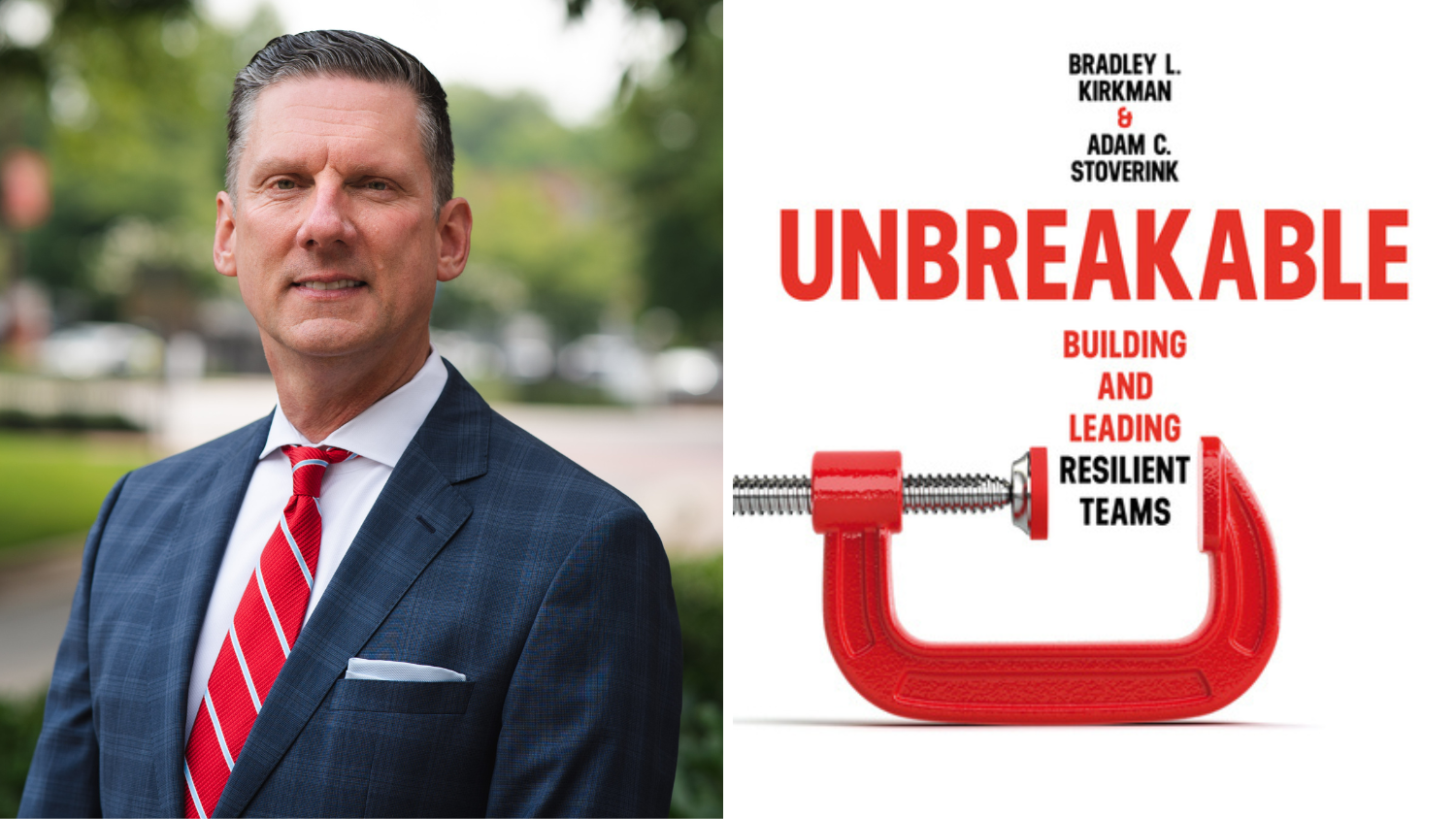By Caroline Barnhill
Today’s business environments are increasingly complex – leading a greater number of organizations to lean into the power of teams to tackle their biggest issues. But what helps teams withstand setbacks and bounce back after the many adversities that are so common in business today? How do we create teams that demonstrate the resilience needed to overcome a wide variety of challenges?
In his latest book, Brad Kirkman, General (Ret.) H. Hugh Shelton Distinguished Professor of Leadership in the Poole College of Management, and co-author Adam C. Stoverink, director of Walton MBA Programs and an associate professor of management at the University of Arkansas Walton College of Business, provide insight into the importance of building resilient teams.
“We wrote the book during the pandemic and dedicated it to our families and to all the front-line workers and first responders who demonstrated extreme resilience during such a difficult time.”
“We started this research pre-COVID not realizing how much we would need collective resilience as a society. Harvard Business Review even named ‘resilience’ its word of the year for business in 2022,” Kirkman says. “We wrote the book during the pandemic and dedicated it to our families and to all the front-line workers and first responders who demonstrated extreme resilience during such a difficult time. There’s a lot we can learn from them.”
We sat down with Kirkman to learn more about his book, “Unbreakable: Building and Leading Resilient Teams,” its findings and what makes a team resilient …
What made you want to write this book?
Over my career, I’ve studied teams and what makes teams effective. Oftentimes, I start by looking at how different attributes apply to individuals and see if we can apply those elements to a team. For example, in my first book “3-D Team Leadership,” I looked at the research on what empowers individuals and tried to see if those same things translated to teams. Well, for this book, we wanted to do the same exercise but with the issue of resilience. What makes people resilient? There’s a ton of research into that – things like self-confidence, self-esteem, a sense of optimism and social support. So I wanted to test to see if those things also make teams resilient.
Can’t you just put a handful of resilient people together and make a resilient team?
As it turns out, no. While it doesn’t hurt to have individually resilient people on a team, there are a totally separate set of factors that predict whether a team will be able to exhibit resiliency – to bounce back after adversity.
So, what makes a resilient team?
We identified four key resources.
1) A moderate amount of team confidence. If you have a team with no confidence at all, they won’t believe they can bounce back from adversity. On the flip side, overly confident teams tend to under-prepare for adversity. And, keep in mind, individual confidence is totally separate from team confidence. If I have individual confidence, I believe I can do a task well. Team confidence requires you believe in the collection of individuals on your team.
2) Teamwork roadmaps. Meaning, when adversity strikes, does everyone on the team have a clear understanding of what they’re supposed to do? Does everyone on the team know their own, and their teammates, distinct roles and responsibilities? Resilient teams need to practice and rehearse those things.
3) Capacity to improvise. When faced with adversity, can the team work together to come up with something new out of their existing resources? Can they put their heads together to get creative to solve a problem?
4) Team psychological safety. This is the ability for individuals on a team to feel safe enough to take risks. Can a team member bring up an idea that might not be popular or feels out-of-the-box? Can a team member feel safe to poke a hole in another member’s idea because they see a flaw that might have missed? Because, when adversity strikes, there needs to be safety established within the team where all members can feel free to express their thoughts and feelings. In fact, Google did a big study to determine the number one “ingredient” for team success within their organization. The top item that emerged? Psychological safety.
So, you see, team resilience is unique because none of those components I listed above have anything to do with what makes individuals resilient.
Which one of these four components do you think is hardest for teams to instill?
Honestly, they all take time to develop. However, if I had to name one, I’d say that psychological safety is probably the most difficult. Most people feel uncomfortable being vulnerable in a team. In the past, showing emotion in the workplace was a sign of weakness. In more recent years, we’ve learned there is a lot of courage that comes from showing vulnerability, which leads to greater bonding among team members and, therefore, greater team resilience.
What advice do you give to managers in building resilient teams?
Our book is very example-driven with stories about how teams use these four key areas to demonstrate resiliency… as well as examples of teams that break apart. But if I had to share one piece of advice, I’d tell members that they need to create teams where individuals can be open and honest. I think that’s the ‘secret sauce’ that weaves through everything. If people can trust one another, they’ll feel safe and confident, be more likely to improvise, and be able to do the right thing at the right time when adversity strikes. For so long in workplace settings, we tried to keep our personal lives out of work. Now, we’ve seen that we are more successful when we bring our whole selves to work. That vulnerability allows for bonding, cohesion, safety and trust to take place. And having a team where those elements are in play helps them bounce back when the road gets tough.
- Categories:
- Series:



